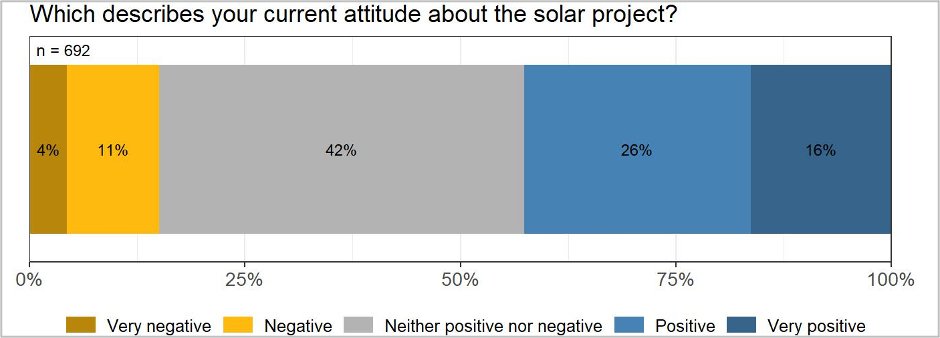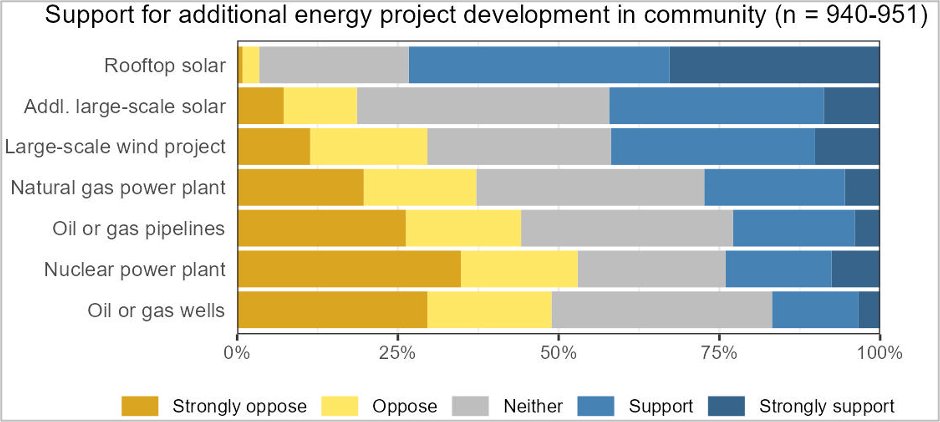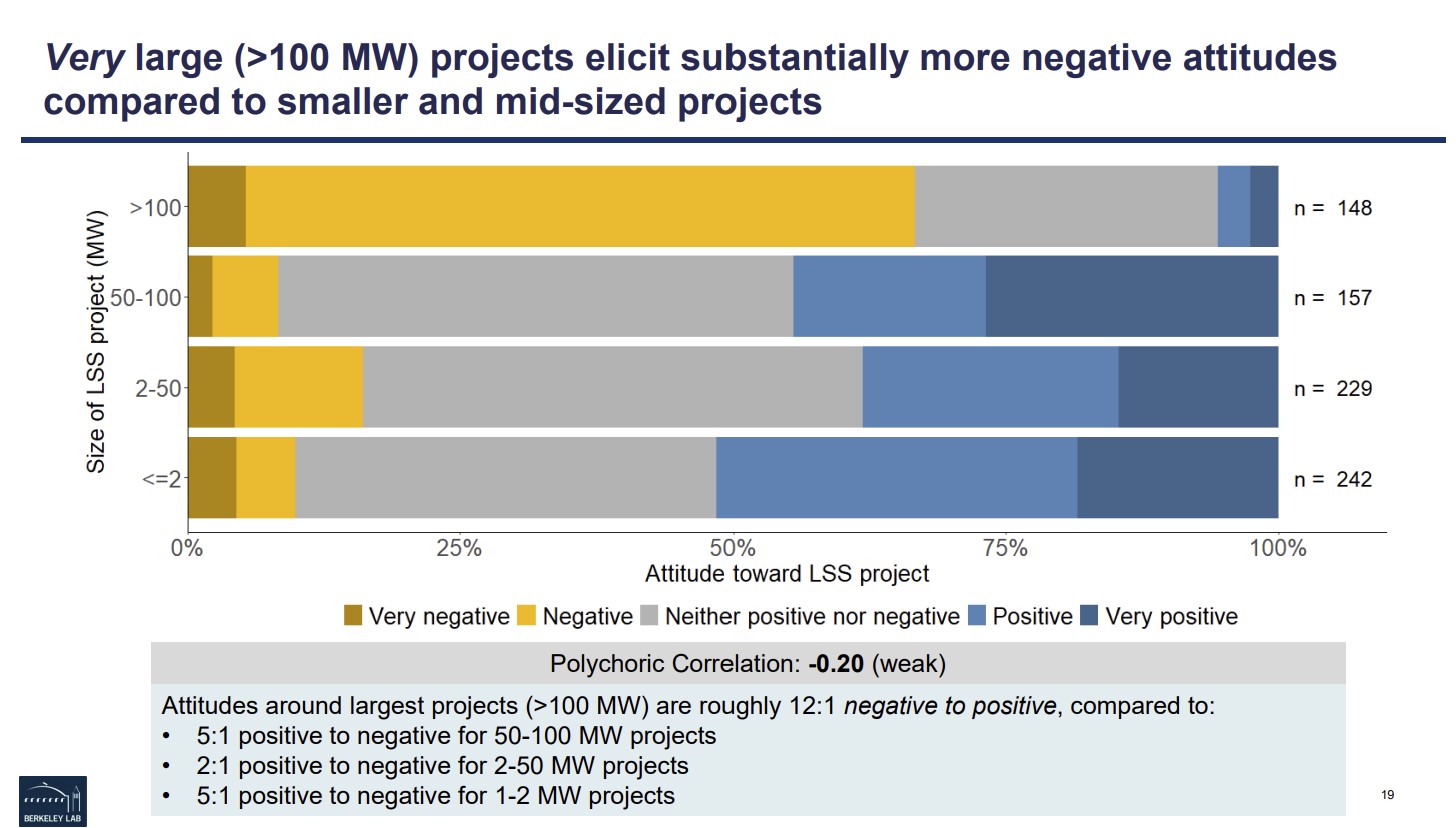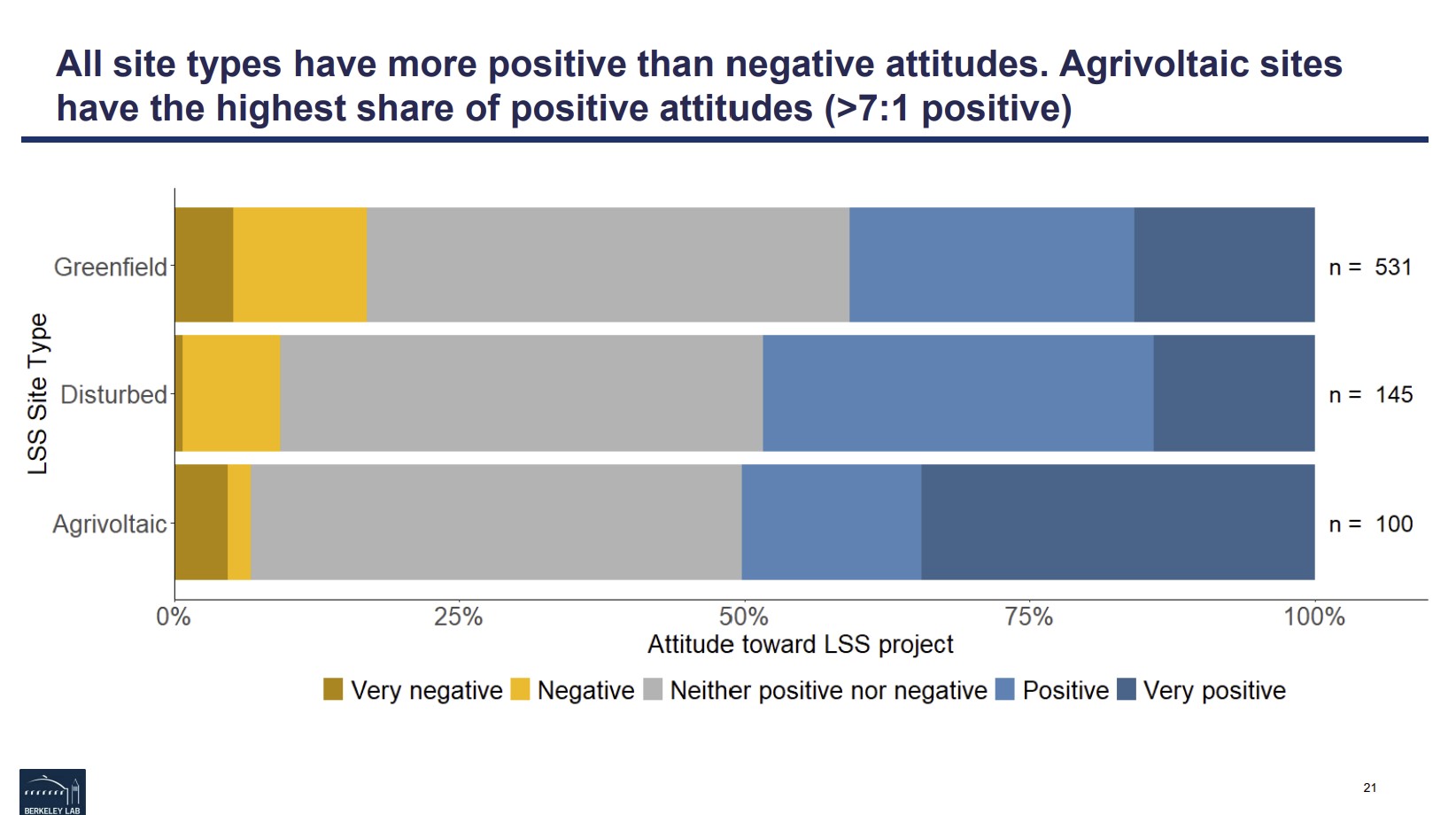Over 10 million homes are located within one mile of the 8,000+ large-scale solar (LSS) projects, as reported by Energy Markets & Policy (EMP) at the Lawrence Berkeley National Laboratory. This number is expected to grow significantly, despite efforts by certain groups to spread falsehoods and hinder progress. Solar power does remain the most popular form of electricity nationwide, despite its popularity declining in more conservative and rural areas as a result of targeted attacks.

To better understand the perceptions of those living near solar power facilities, the EMP team, in collaboration with the University of Michigan, conducted a comprehensive, 12-page survey that explored 49 different aspects of living near LSS projects.
Data solicited from 4,974 households was published in ‘Perception of Large-Scale Solar Project Neighbors: Results from a National Survey’. The group shared the responses from 984 households located within three miles of 380 unique LSS projects, with 71% of these households located within one mile of the projects.

According to the EMP study, neighbor attitudes remained fairly consistent until projects surpassed 100 megawatts, at which point the sentiment shifted dramatically, displaying a 12 to 1 ratio of negative to positive responses. This strong opposition was closely linked to concerns about the impact on local aesthetics, overall quality of life, and perceptions of unfairness in the project planning process.
Notably, only 20% of those surveyed were aware of the projects before construction began, and about one-third discovered the projects’ existence only upon receiving the survey. Those who see large solar installations on a daily basis were significantly more likely to express negative attitudes toward these projects.

When asked about expanding LSS projects and other types of energy infrastructure, respondents showed the strongest support for rooftop solar, with less than 10% opposition. Support for new LSS projects ranked second, followed by wind energy, gas plants, pipelines, wells, and nuclear energy, in that order.
Interestingly, if a solar power project must be built, agrivoltaic projects (which integrate agriculture with photovoltaic systems to maximize land use) received the highest approval ratings, with less than 10% expressing a negative view, and 50% being positive or very positive.
The results showed that 85% of these neighbors held a positive or neutral view of their local solar power projects, 11% viewed them negatively, and 4% had a very negative perception. Attitudes were slightly less favorable among those living within a quarter mile of a facility.

Overall, support for constructing additional solar facilities was strong, with 42% in favor and only 18% opposed. However, attitudes shifted significantly as project sizes increased. Research from upstate New York echoed these findings, showing a change in perception when projects exceeded 50 acres.
This content is protected by copyright and may not be reused. If you want to cooperate with us and would like to reuse some of our content, please contact: editors@pv-magazine.com.








By submitting this form you agree to pv magazine using your data for the purposes of publishing your comment.
Your personal data will only be disclosed or otherwise transmitted to third parties for the purposes of spam filtering or if this is necessary for technical maintenance of the website. Any other transfer to third parties will not take place unless this is justified on the basis of applicable data protection regulations or if pv magazine is legally obliged to do so.
You may revoke this consent at any time with effect for the future, in which case your personal data will be deleted immediately. Otherwise, your data will be deleted if pv magazine has processed your request or the purpose of data storage is fulfilled.
Further information on data privacy can be found in our Data Protection Policy.